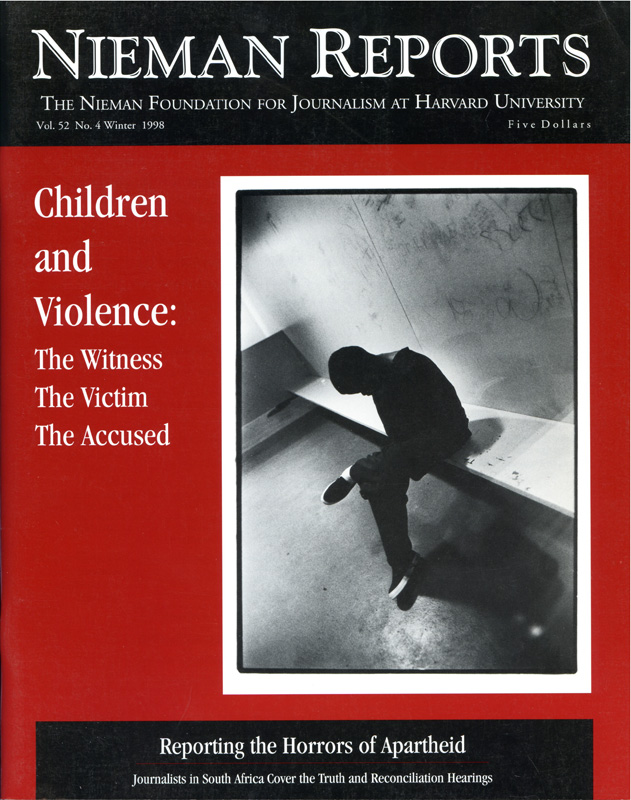In this edition of Nieman Reports, we examine ways in which we report on children and violence.
First, we travel to the sites of the five recent and highly publicized school shootings. There, we listen as the editors of local papers and a national correspondent walk us through their reporting on these tragic events and explain how coverage of this story impacted them and their newsrooms, then and now.
Next, we journey into the private realm of family violence, as seen through the eyes of children who witness it. Two reporters who covered such a story and experts who work with child victims of domestic and community violence demonstrate how essential it is for us, as journalists, to make these connections as we report on children’s antisocial behaviors.
From there, we move into courtrooms and juvenile detention centers, probing ingrained tensions that exist when we try to merge the job of reporters, the protections promised to our young, and the concerns of judges. We also get a glimpse of adolescent girls’ increasing involvement with crime.
Then, we take a look at how customary methods of coverage shape public perception and policymaking in the arena of child and juvenile crime, including studies detailing the role media coverage plays in buttressing Americans’ views and attitudes about race, children and violence. For those who are dissatisfied with how this topic is generally covered, we offer information about a new and different approach to presenting coverage of violence.
Finally, editors at Chicago’s two newspapers take us inside their decision-making when it comes to coverage of children and violence.
First, we travel to the sites of the five recent and highly publicized school shootings. There, we listen as the editors of local papers and a national correspondent walk us through their reporting on these tragic events and explain how coverage of this story impacted them and their newsrooms, then and now.
Next, we journey into the private realm of family violence, as seen through the eyes of children who witness it. Two reporters who covered such a story and experts who work with child victims of domestic and community violence demonstrate how essential it is for us, as journalists, to make these connections as we report on children’s antisocial behaviors.
From there, we move into courtrooms and juvenile detention centers, probing ingrained tensions that exist when we try to merge the job of reporters, the protections promised to our young, and the concerns of judges. We also get a glimpse of adolescent girls’ increasing involvement with crime.
Then, we take a look at how customary methods of coverage shape public perception and policymaking in the arena of child and juvenile crime, including studies detailing the role media coverage plays in buttressing Americans’ views and attitudes about race, children and violence. For those who are dissatisfied with how this topic is generally covered, we offer information about a new and different approach to presenting coverage of violence.
Finally, editors at Chicago’s two newspapers take us inside their decision-making when it comes to coverage of children and violence.



